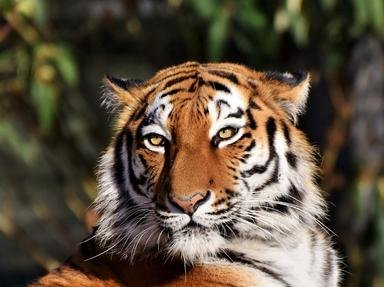Quiz Answer Key and Fun Facts
1. You'll recognize me by my stripes and my enormity as I burn through the forests of Siberia and Bengal.
2. Very social, I live in prides, mane-ly on the plains (savannas) of Africa.
3. I am one of many spotted big cats of the Old World and an excellent tree-climber. (Try not to confuse me with the others.)
4. Another spotted big cat, I am found *only* in the Americas. Admire my large rosettes from a distance, please, or I'll crush you with my powerful jaws.
5. Seek me if you dare in Siberia and the Himalayas, where my wide paws, furred on the underside, help me through the snow and ice.
6. I am not actually a cat at all! (I just look like one.) Look for me at night in the trees.
7. So slender and spotted, I speed through the savanna with my non-retractable claws. None can outpace me, but many can out-climb me and out-see me at night.
8. The humans of North and South America have many, many names for me, as I have roamed from the Yukon to the Andes. You just need to find one.
9. The pre-Colombian peoples of North (but not South) America featured me in their mythology, and I have relatives in Eurasia. You'll know me by my ear tufts and my stubby tail.
10. I am not actually a distinct species, but you'll know me when you see me, if you see me.
Source: Author
gracious1
This quiz was reviewed by FunTrivia editor
guitargoddess before going online.
Any errors found in FunTrivia content are routinely corrected through our feedback system.

